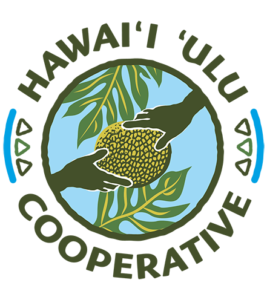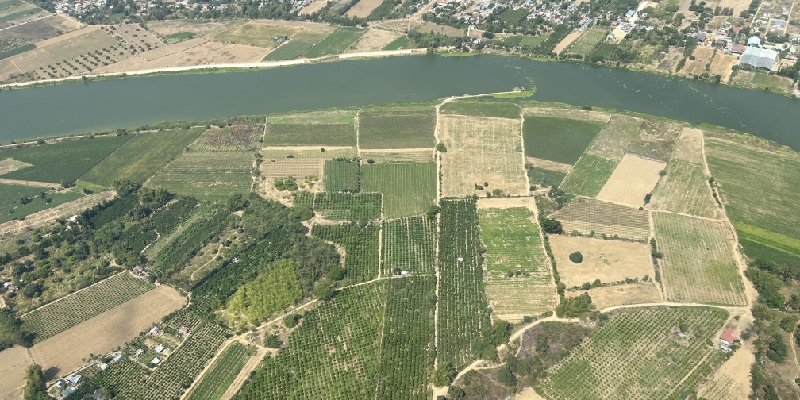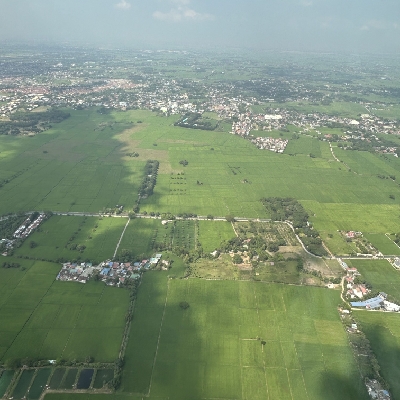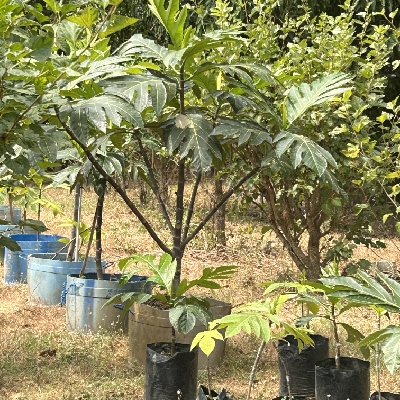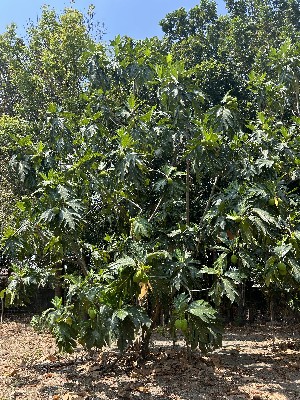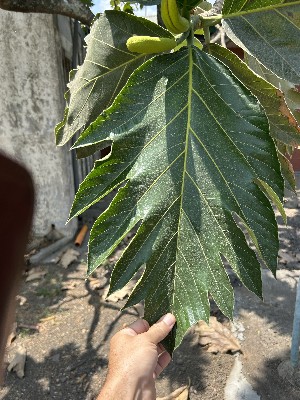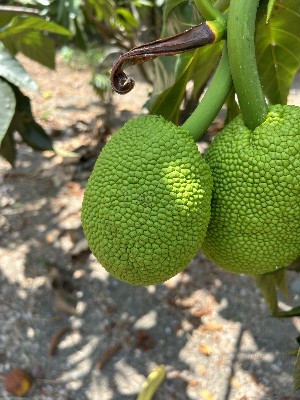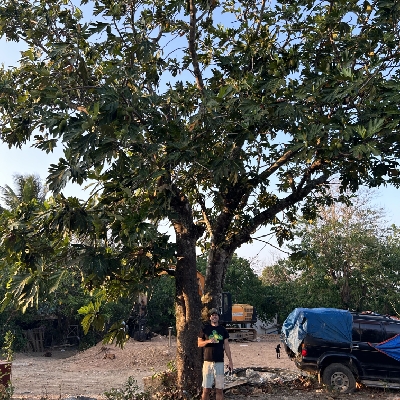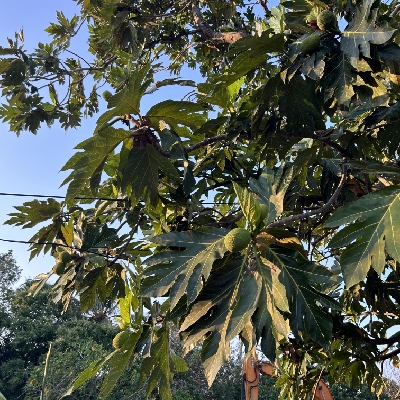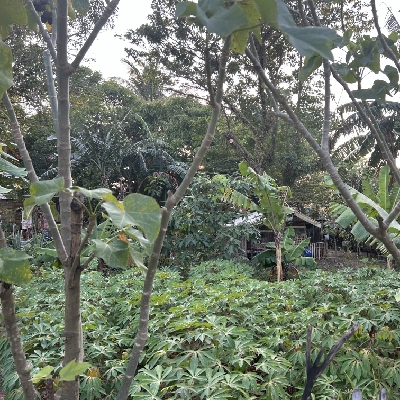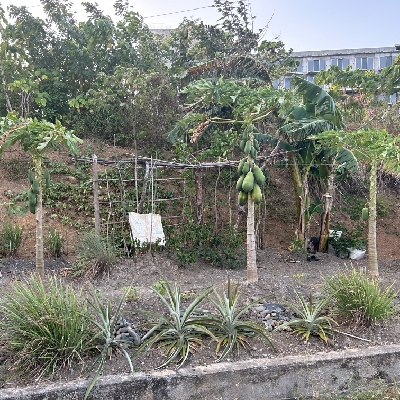Bringing Breadfruit Back
Photo above: Aerial view of Filipino agriculture systems, this area mostly fruit orchards – photos courtesy of Noa Lincoln.
Secretary Estrella of the Department of Agrarian Reform or DAR spearheads the Philippines’ current breadfruit initiative. Secretary Estrella has a farm with about 25 breadfruit trees in Pangasinan, a region in the northern part of Luzon (the main island where the capital, Manila, is located). His trees were propagated from an existing local variety, but the varieties are unknown. Other places where breadfruit trees can be found include Caticlan, Davao, Cebu, and Bicol.
A previous effort to promote breadfruit in 2011-2013 focused on planting about 1,000 backyard trees in the Bicol region. Secretary Estrella’s vision is to establish a network of demonstration sites where farmers can see how breadfruit can be grown as part of diverse commercial or home production systems, such as through agroforestry techniques like windbreaks and silvopasture. On his farm, sheep are already integrated with fruit trees like sapote, jackfruit and mango. DAR could then support local propagation efforts and help distribute trees to interested farmer-beneficiaries, some of whom have parcels as small as ½ a hectare (1.2 acres) and typically ranging in size from 3-5 hectares (7-12 acres).
Photo above: Central Luzon farmland consisting mainly of rice fields and aquaculture interspersed with fruit orchards.
Photo above: potted local breadfruit trees on Secretary Estrella’s farm in Pangasinan.
Photos above: 3 yr. old breadfruit trees on Secretary Estrella’s farm are already fruiting.
Photos above: A variety of breadfruit growing on Caticlan Island; appears similar to the variety growing in Secretary Estrella’s Farm on Luzon.
